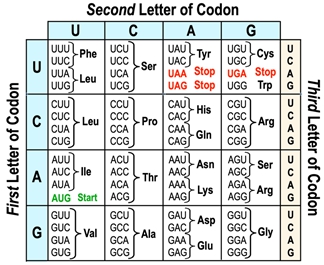The genetic code serves as a crucial framework that illustrates how DNA and RNA dictate the sequence of amino acids in proteins. Essentially, it acts as a bridge connecting nucleic acids, such as DNA and RNA, to the amino acids that form proteins. This code is largely universal among various organisms, although some species may exhibit slight variations.
At the core of the genetic code is the concept of a codon, which is a sequence of three nucleotides found in messenger RNA (mRNA). Each codon corresponds to a specific amino acid, meaning that the genetic code can be analyzed one codon at a time to determine the amino acid it encodes. This systematic approach allows for a detailed understanding of protein synthesis, as each codon reveals one amino acid sequentially.
In summary, the genetic code is essential for translating the information stored in nucleic acids into functional proteins, highlighting its importance in molecular biology and genetics.



